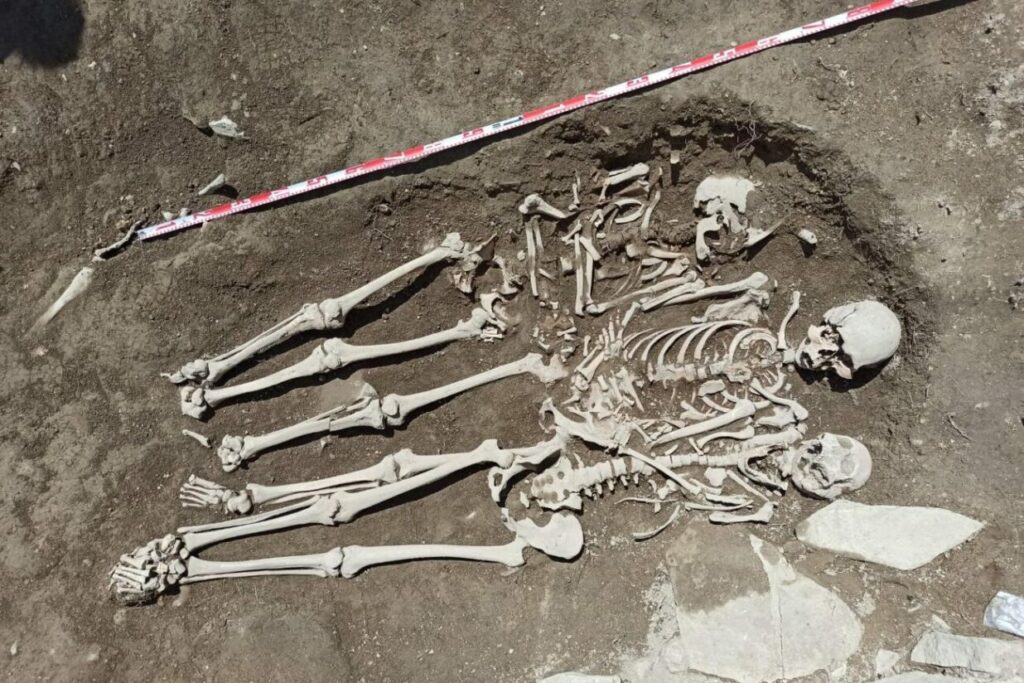News

129 lifes: When the black plague arrived in Vilafranca
The exhibition presents an important part of the archaeological site that appeared during the construction works of the new VINSEUM. With the demolition of the Cal Pa i Figues building, in the summer of 2018, a medieval necropolis unexpectedly emerged, improvised by the arrival of the Black Death and from which the remains of 129 people have been recovered.

New data about the babies from the Iberian site of Ullastret: no sacrifices, no sex selection
The 15 babies discovered at the Iberian site of Ullastret died naturally and were buried at home, according to a UAB study using the most advanced scientific techniques.

Microscopic study of milk teeth reveals mystery of death of Iberian culture newborns buried inside homes
A UAB study in collaboration with the UVic-UCC and the ALBA synchrotron concludes that the Iberian culture (8th to 1st centuries BCE) newborns buried within domestic spaces died of natural causes, such as complications during labour or premature births, and not due to ritual practices.

The remains of Aurora Picornell’s brother and five other victims of Francoism have been identified in Son Coletes and Formentera.
These findings correspond to the excavations carried out between 2020 and 2023 in Manacor, within the II, III and IV Pla de Fosses and in the second part of the excavations in the Formentera cemetery (IV Pla de Fosses).

The remains of Aurora Picornell’s brother and five other victims of Francoism have been identified in Son Coletes and Formentera.
The bacterium of the Black Plague, Yersinia pestis, has been identified in an individual who was buried in the cemetery of Castell de Besora (Osona), in the 14th century.

Despertant la dama de les muntanyes – Special program from the Museum of Archeology of Catalonia to discover the Lady of the Mountains and the sepulchral complex of the Montanissell cave (2024).
The discovery, now 20 years ago, of the sepulchral cave of Montanissell (Sallent-Coll de Nargó, Alt Urgell) with the remains of 8 skeletons belonging to a population that lived in this area of the Lleida Pre-Pyrenees about 5500 years ago, in the ‘Bronze Age, remains an enigma, despite the important fruits that scientific research has produced in these decades of research.

The remains found in Cal Pa and Figues show that the plague passed through Catalonia in the 14th century (2023). An anthropological and genetic study signed by Núria Armentano and Cristina Santos has confirmed the suspicions that arose during the archaeological excavation of Cal Pa i Figues, open between the years 2018 and 2021 and motivated by the construction works of the future new VINSEUM: a part of the individuals buried in the 14th century necropolis that was discovered there died due to the Black Death.

Fòrum de ciència – Interview with Assumption Malgosa Morera on Ràdio l’Escala (2022)
The Islamic cemetery of El Born – Round table with Assumption Malgosa, Cristina Santos, Núria Armentano, Dolors Bramon, Lídia Font, Antoni Rigo and Anna Molina (2021).
In 1991, the only Islamic burial ritual necropolis found in Barcelona was discovered in Plaça Comercial. For the first time, a necropolis of this type was documented in the city, dating from approximately the year 1100. Since then, new archaeological interventions have confirmed that the burial space occupied a large sector of this area of Ribera neighborhood. Thanks to studies and technology, we now have information about the buried people.